Last updated:
Refereed articles

This article examines the policing of gender nonconformity in Australia in the early decades of the twentieth century. With a focus on Victoria, it asks: what are we looking for when looking for trans and gender diverse crime history, and what can history tell us about the experiences of trans and gender diverse people in Australia’s criminal justice system today? The article explores discourses around gender, sexuality, respectability and criminality relating to people who were arrested for presenting as a gender different to the one they were assigned at birth. Using case studies, it discusses some of the challenges of archival research into trans and gender diverse history, as well as the significance of uncovering these histories today.
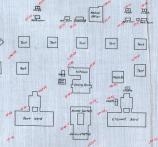
By the turn of the twentieth century, tuberculosis was understood as a public health concern in Australia. In response, state governments began to construct specialised hospitals, called sanatoria, for the isolation, education and treatment of tubercular patients. The treatments undertaken in these institutions could involve work in the outdoors, ranging from assisting in maintaining the sanatorium buildings to farm work. But, to date, there has been little examination of the variety of outdoors work that was utilised within these Australian institutions, or which sanatoria instituted these regimens.
The Greenvale Sanatorium, established in 1905 north-west of Melbourne, expanded the role of agriculture in patient therapy in 1912 to a scale that had not previously been seen in Australia. The farm work undertaken at Greenvale is documented in the transcript of a 1918 Royal Commission into the management of the institution, and other records held by Public Record Office Victoria.
Greenvale Sanatorium’s use of farm work as therapy, and as a cost-saving measure, can be traced over time. By examining the sanatorium farm at the time of the Royal Commission’s investigation, and in its wake, it is possible to draw attention to the intrinsic role that patient labour played in early twentieth-century sanatorium operations, and how the land used for farming has contributed to Greenvale’s appearance in the present.
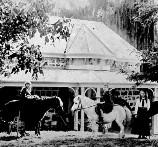
Girls’ voices in nineteenth-century coronial inquest files
Expand SummaryThe Victorian Coronial Inquest Deposition archive, held at Public Record Office Victoria, provides important insight into the overlooked lives of nineteenth-century children. Some of the records include testimonies of child witnesses—rare examples of children speaking in history. Though matter-of-fact and often fragmentary, individual inquest cases and depositions can formulate an image of children’s worlds. This article focuses on cases in nineteenth-century Victoria in which girls died or were called as witness. On the surface, these records divulge discourses of anxiety around girlhood, societal regulations and behavioural ideals. Digging deeper, it is possible to gain entry into the lives of girls themselves. The daily activities of girls who died are described or inferred, illustrating their roles in family, work, school, play and relationships. The voices of girl witnesses are heard firsthand, adding veracity and layers of complexity to understandings of their family, friends and daily lives. The records contain evidence of material conditions and experience and can also be used to uncover intangible elements of existence, including emotions, relationships and thoughts. Through death we are offered an insight into life.
Forum articles
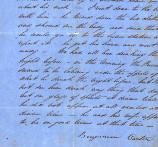
Anatomy of the first wife murder in the new colony of Victoria
Expand SummaryPatrick Kennedy was convicted of murdering his wife Mary (née Costello) in 1851 and became the first man executed after Victoria separated from New South Wales. Revisiting the case through inquest and trial documents, and contemporary newspaper reporting, this article examines the legacy of family violence and the challenge to masculine privilege and entitlement at the heart of the case.
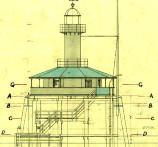
Infrastructure builders at the turn of the twentieth century
Expand SummaryTo support population growth and economic development following the boom of the 1880s, government agencies and municipal and shire councils around Victoria created numerous new roads, bridges, railway lines and wharves. While the work of many leading engineers who designed or oversaw the construction of much of this vital infrastructure has been documented, little has been written about the many small contractors who undertook the construction of these facilities. This article tells the stories of three Scottish immigrants, Donald Ross, Peter Fraser and Simon Patience, who formed a series of contracting companies between 1886 and 1912. Ross & Patience built roads, bridges and defence facilities in inner bayside Melbourne. The firm then morphed into Ross, Fraser & Co. and, a decade later, became Ross, Fraser & Patience, specialising in the construction of railway bridges, jetties, piers and wharves that relied upon their pile driving expertise. They built the Point Gellibrand Pile Lighthouse that operated off Williamstown from 1906 for 70 years. This account of their work draws upon contract and other legal documents that have lain largely forgotten in public archives or preserved by historical societies. It illustrates how these prosaic records, when combined with digitised newspaper accounts of the time, can lead to important insights into the nature of contracting work more than a century ago.
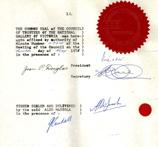
This article considers affect and the archive. It was inspired initially by the work of historian Emily Robinson and muses on affective engagement with the materiality of the archive, archival discovery and the content of the archive. The author reflects on her own archival experiences within and outside the collections of Public Record Office Victoria.

‘Parish and township plans’ held by Public Record Office Victoria
Expand SummaryThis article—a brief summary of ongoing research—attempts to provide an understanding of the generic descriptors ‘parish plans’ and ‘township plans’, terms first used publicly for published versions of hard copy cadastral plans now held within the Public Record Office Victoria (PROV) collection. It seeks to provide context for the plans held by PROV and elsewhere by establishing the various sequences of plans that have been created, their functions and, in some instances, how these can be distinguished from each other. These research findings will facilitate changes in how these plans are understood as records (rather than as items that offer a convenient tool for researchers to find land selection file numbers). Ultimately, these changes will be reflected in the descriptive data relating to these records, which will benefit both PROV staff and the general public in gaining a better understanding of how these records were created and how they documented the management of Crown land.
Material in the Public Record Office Victoria archival collection contains words and descriptions that reflect attitudes and government policies at different times which may be insensitive and upsetting
Aboriginal and Torres Strait Islander Peoples should be aware the collection and website may contain images, voices and names of deceased persons.
PROV provides advice to researchers wishing to access, publish or re-use records about Aboriginal Peoples
![Provenance 2021 Detail of a photograph of Point Gellibrand Pile Light House, c. 1960s, PROV, VPRS 8357/P1, Unit 6, Photograph [006]](/sites/default/files/files/banners/provenance2021-banner.jpg)